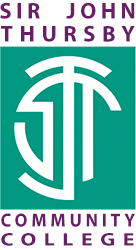Topic 1 Year 7 Physics
| Physics | |||
| Topic | Energy1 | ||
| No of lessons | 12 | ||
| When is it happening | Term 1 Year 7 | ||
| What will students learn | Interpreting the information given on food labels. The definitions and some examples of renewable and non-renewable energy sources. How the energy in an object depends on its height, speed, temperature or if it is stretched/ compressed. Examples of different energy stores. The changes in a system in terms of energy. | ||
| Key Knowledge that students should know at the end of 'Topic' | This is the knowledge that students will meet for the first time in this topic |
Compare the amounts of energy transferred by a range of different foods and activities. Explain the term fossil fuels and explain the advantages and disadvantages of using them.Evaluate the advantages and disadvantages of different renewable energy resources. Evaluate the social, economic and environmental consequences of using a resource to generate electricity Define power as how quickly energy is transferred by a device. Know how to use the formula cost = power (kW ) x time (hours) x price (per kWh) Describe, in detail, energy transfers from a renewable or non-renewable resource to an electrical device in the home Analyse data from a home energy bill and suggest ways to reduce costs. Suggest actions a government or communities could take in response to rising energy demand, including reducing electricity use. Rearrange the cost equation to find power, time and price. Explain that when energy is transferred, the total energy is conserved, but some energy is dissipated, reducing the useful energy available. Explain that energy is transferred between energy stores and give examples of transfers. Calculate input and output energy from useful energy and amount dissipated |
|
| This is knowledge that students may have met before but will need to deepen their understanding | Students should have a basic knowledge of forces and how they can make an affect on an object. This will help them to link how much energy is in an object in this topic. (E.G when stretched/compressed) They should have a basic knowledge of simple mechanisms such as levers, pulleys and gears. The knowledge on forces will be retrieved and expanded upon in the forces topic in term 3 in year 7. | ||
| Key Skills that students should be able to demonstrate at the end of 'Topic' | This is the skills that students will meet for the first time in this topic | Practically assess and compare the amount of energy in different foods. Apply the use of formule for calculating power in practical examples of energy use in the home. Calculate the efficiency of objects when given input energy, output energy or dissipated energy. Research skills- renewable energy sources. Discuss the problems scientists and governments may encounter when trying to reduce global electricity use. | |
| This is skills that students may have met before but will need to develop | Other than general discussion and research skills, students will more than likely have not come across any of the skills required for this topic at KS2. | ||
| Key vocabulary that students should know and understand |
Food label, fossil fuel, renewable energy source, non-renewable energy source, power, correlation, incandescent, system, gravitational store, kinetic store, elastic store, chemical store, thermal store, dissipated, conservation (of energy). |
||
| The Big Question | What is energy and how is it transferred? | ||
|
Key questions that students should be able to answer at the end of the 'Topic' |
How can we measure and compare the amount of energy in different foods? | ||
| What is a fossil fuel and what are the advantages/disadvantages of using them? | |||
| What is a renewable energy source and what are the advantages/ disadvantages of using them? | |||
| What is power and how is it calculated? | |||
| How can Governments and communities respond to rising energy demands? | |||
| What problems might scientists encounter when attempting to reduce electricity use? | |||
| What are the different types of energy store? | |||
| How is energy transferred between energy stores? | |||
| What is dissipation of energy? | |||
